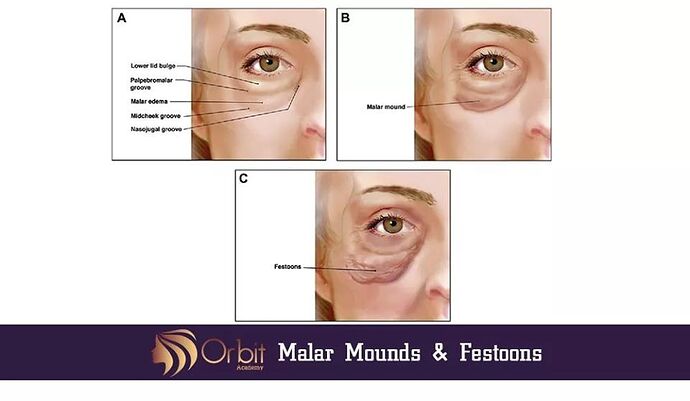Blepharoplasty, the most common aesthetic eyelid procedure, sometimes involves a challenging patient subgroup: those who present with malar edema, malar bags, and festoons of the lower eyelid and cheek.
■Malar edema: Fluid that collects over the malar eminence, below the level of the infraorbital rim. Malar edema often varies in severity; it may be more noticeable after a salty meal and sometimes has a slight bluish discoloration. The presence of pitting on examination is evidence of edema.
■Malar mound: Chronic soft tissue swelling or bulge over the malar eminence situated between the infraorbital rim and midcheek. The transition between malar edema and malar mounds can be subtle; the distinguishing factor is the permanent presence of excess tissue and soft tissue bulge.
■Festoons: Cascading hammocks of lax skin and orbicularis muscle that hang between the medial and lateral canthi and may or may not contain herniated fat. The term is derived from the 17th-century Italian festone or French feston that describes a festive ornament—such as flowers, foliage, or fabric—hung in a graceful loop between 2 points.
The spectrum from malar edema to festoons represents a challenge for oculofacial plastic surgeons who strive for periorbital rejuvenation. Thoroughly understanding the anatomical basis of this condition is essential to learning how to address it surgically.
